a&e features
Nominees the least controversial thing about this year’s Oscars
Academy lurches from backlash to backlash in lead up to this year’s awards
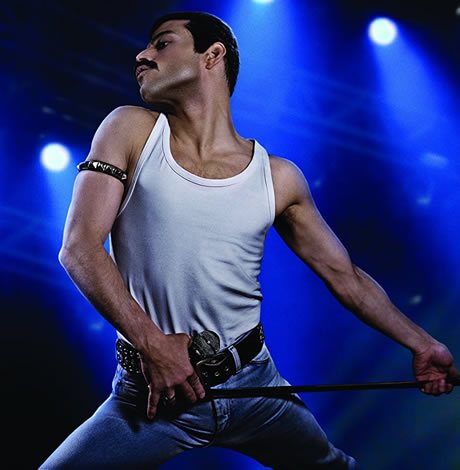
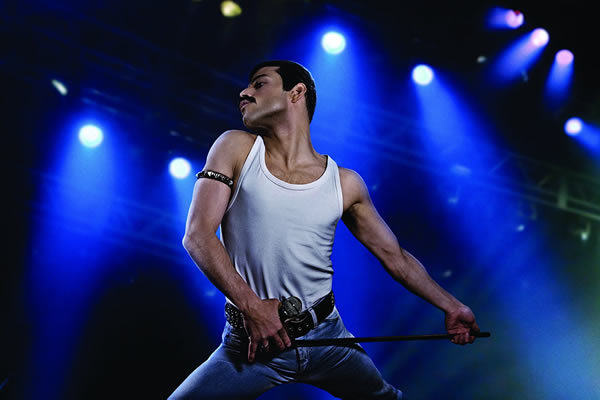
This year’s Oscars show, which will be broadcast on ABC this Sunday (Feb. 24), will be like a cinematic Zen koan. The 91st annual Academy Awards honoring movies from 2018 will be its queerest show ever, but there won’t be many openly LGBT people onstage.
And since there are no clear front runners, there shouldn’t be any upsets or controversies during the ceremony. Instead, thanks to some wild missteps by the Academy, most of the Oscar drama happened before the red carpet was even rolled out.
Following years of bad reviews, falling ratings and bloated runtimes, the Board of Governors of the Academy of Motion Picture Arts and Sciences decided to make changes for the 2019 awards ceremony.
In August 2018, in an ill-conceived attempt to bridge the gap between popular favorites (which don’t win Oscars) and critical favorites (which do), the Academy announced the creation of a new category: Best Popular Film. The Academy did not release any criteria for how these films would be selected and the proposal met with widespread derision.
The following month, the Academy announced that the introduction of the category would be delayed to “examine and seek additional input regarding the new category.”
In October, the Board of Governors announced that producers Michael De Luca and Jennifer Todd would be replaced by Donna Gigliotti and Glenn Weiss.
In December, the Academy announced that comedian Kevin Hart would host the Oscars ceremony. When homophobic jokes and tweets from the actor surfaced, LGBT film fans and their allies instantly demanded that Hart be removed as host. Despite Ellen DeGeneres’ attempt to serve as an intermediary between a somewhat apologetic Hart and the Academy, Hart quickly stepped down as host.
Since the awards date was rapidly approaching, and since a number of previous hosts (including DeGeneres, Neil Patrick Harris, Seth McFarlane, Chris Rock and Jimmy Kimmel) publicly stated they had no interest in hosting the 2019 show, the Academy announced that there would not be an official host for the ceremony. Instead, a long string of performers and celebrities would present the awards. The last time the Academy tried this at the 61st ceremony in ’89, it was widely panned.
Last month, the Academy shot itself in the foot again. In order to shorten the show, the Academy announced that only two of the five nominated songs would be performed live. Kendrick Lamar would sing “All the Stars” from “Black Panther” and Lady Gaga and Bradley Cooper would sing “Shallow” from “A Star Is Born.”
There was an immediate backlash from audience members and industry musicians, most notably previous nominee and “Mary Poppins Returns” star Lin Manual Miranda. The Academy reversed its decision six days later.
Finally, earlier this month, in another attempt to shorten the broadcast, the Academy announced that awards in four categories (Best Cinematography, Best Film Editing, Best Live Action Short Film and Best Makeup and Hairstyling) would be presented during commercials breaks. Audiences could stream the presentations live online and edited acceptance speeches would be aired later in the ceremony.
Led by angry fans, the Hollywood guilds and several prominent directors, the backlash was again fast and furious.
The Academy reversed course four days later and announced that all 24 awards would be presented on live television.
In the midst of all these self-inflicted injuries, the announcement of the nominees went off remarkably smoothly. In the wake of #OscarsSoStraight and #OscarsSoWhite, the slate of 2019 Oscar contenders seemed much more diverse, despite the inevitable stumbles and snubs.
Of the eight films nominated for Best Picture, out of a possible 10, five had significant LGBT content. “The Favourite” was a bawdy reexamination of English history focusing on a lesbian love triangle in the court of Queen Anne. “A Star Is Born” featured Ally’s gay BFF and “Vice” featured Dick Cheney’s lesbian daughter Mary. Real-life gay musicians were front and center in “Bohemian Rhapsody” and “Green Book.”
In a robust show of inclusion, the other Best Picture nominees included a strong female-centered narrative in “Roma,” an African-American cop named Ron Stallworth fighting the Klan in “BlacKkKlansman” and a black superhero (with some fierce female colleagues) in “Black Panther.”
However, once the initial celebrations of LGBT representation died down, some problems became apparent. Three of the Best Picture nominees engaged in significant straight-washing.
In “BlacKkKlansman,” writer/director Spike Lee and his colleagues left out the fact that in real life, Stallworth and his partner thwarted the bombing of two gay bars in Denver.
In “Bohemian Rhapsody,” a film billed as a biopic of Freddie Mercury (Rami Malek) turned out to be a well-made concert film about the creation of Queen’s big hits and their performance of those hits at Live Aid. Mercury’s bisexuality is largely erased and his sexual life is reduced to a redemption narrative as he staggers from the bad influence of his manager (Allen Leech) to the good influence of his monogamous boyfriend (Aaron McCusker).
Despite great performances and good intentions, “Green Book” relies on tired cinematic tropes to tell the story of civil rights pioneer Don Shirley, a classically trained, African-American musician who toured the South in the early 1960s with the assistance of his white driver Frank “Tony Lip” Vallelonga. The script combines the feel-good racial sentimentality of “Driving Miss Daisy” with the uplifting appeal of the Hollywood legend of the “Great White Savior.” In this case, Tony Lip becomes the “Straight White Savior” who, among other things, teaches Shirley how to be a black man by making him listen to R&B songs and feeding him fried chicken.
Along with these problem with LGBT representation, the Best Picture nominees also have a problem with LGBT inclusion. None of the queer characters are played by queer actors and none of the writers or directors are LGBT.
But it is interesting to note that the bisexual Lady Gaga plays a straight character in “A Star Is Born.” That’s a small but important step for Tinsel Town.
In addition to these problems with representation and inclusion, two major LGBT films were not nominated for Best Picture, even though two of the 10 possible slots were unfilled.
“Can You Ever Forgive Me?” is the true tale of a lesbian literary forger and her gay accomplice. Melissa McCarthy and Richard E. Grant won well-deserved nominations for their outstanding acting. Screenwriters Nicole Holofcener and Jeff Whitty, the openly gay creator of “Avenue Q,” were nominated for their adaptation of Lee Israel’s memoir.
However, the movie was not nominated for Best Picture and Marielle Hiller was not nominated for Best Director. In fact, no women were nominated in the Best Director category.
“Will You Be My Neighbor?” was popular with both critics and audiences but was not nominated for Best Picture or Best Documentary. In telling the story of ground-breaking and boundary-breaking broadcaster Fred Rogers, director Morgan Neville featured the story of François Clemens, the black gay opera singer who played Officer Clemens on “Mister Roger’s Neighborhood.”
Outside of the major categories, a handful of LGBT artists and films with LGBT themes were nominated for Academy Awards this year. The lesbian-themed “Marguerite,” one of four Oscar nominees that was screened at D.C. Shorts, is up for Best Live Action Short. Rob Epstein and Jeffrey Friedman, the openly gay directors of the Oscar-winning “Common Threads: Stories from the Quilt” are nominated for Best Documentary Short Subject for “End Game.” Marc Shaiman and Scott Wittman are nominated for their musical work on “Mary Poppins Returns.”
Other out nominees include Scott Rudin, who produced “Isle of Dogs,” a nominee for Best Animated Feature Film, and John Ottman who is up for Best Film Editing for “Bohemian Rhapsody.” The LGBT-themed “Mary Queen of Scots” was also nominated in two design categories.
This year’s field is wide open; the usual predictors are all pointing in different directions.
As for my personal preferences, I’m surprised that John C. Reilly wasn’t nominated for Best Actor for his great performance in “Stan and Ollie,” especially given the lackluster field in that category. Among the nominees, I don’t care much.
I also wish Andrew Dice Clay had been nominated for Best Supporting Actor instead of his “A Star Is Born” castmate Sam Elliott. He gave an indelible performance in a more interesting role. Choosing among the nominees: Adam Driver.
The female acting categories are an embarrassment of riches. All the nominees were great and I still wish there was room for Felicity Jones in “On the Basis of Sex,” Annette Bening in “The Seagull,” Linda Cardellini in “Green Book,” Kiki Layne in “If Beale Street Could Talk,” Nicole Kidman in “Boy Erased” and the practically perfect Emily Blunt in “Mary Poppins Returns.”
Among the nominees, I pick Glenn Close and Amy Adams. That means Lady Gaga had better win Best Original Song.
Along with “Won’t You Be My Neighbor?,” I also wish “Dark Money,” the powerful documentary about campaign finance by trans director Kimberly Reed had been nominated. Among the nominees: “RBG.”
As for the other categories, although “Roma” may prove unconquerable, I hope “The Favourite” sweeps everything else.
It was, after all, the best — and queerest — film of 2018.
a&e features
From Prohibition to Pride: Queering the District podcast reveals local LGBTQ history
The new podcast explores the hidden history and enduring impact of queer spaces in Washington, D.C.
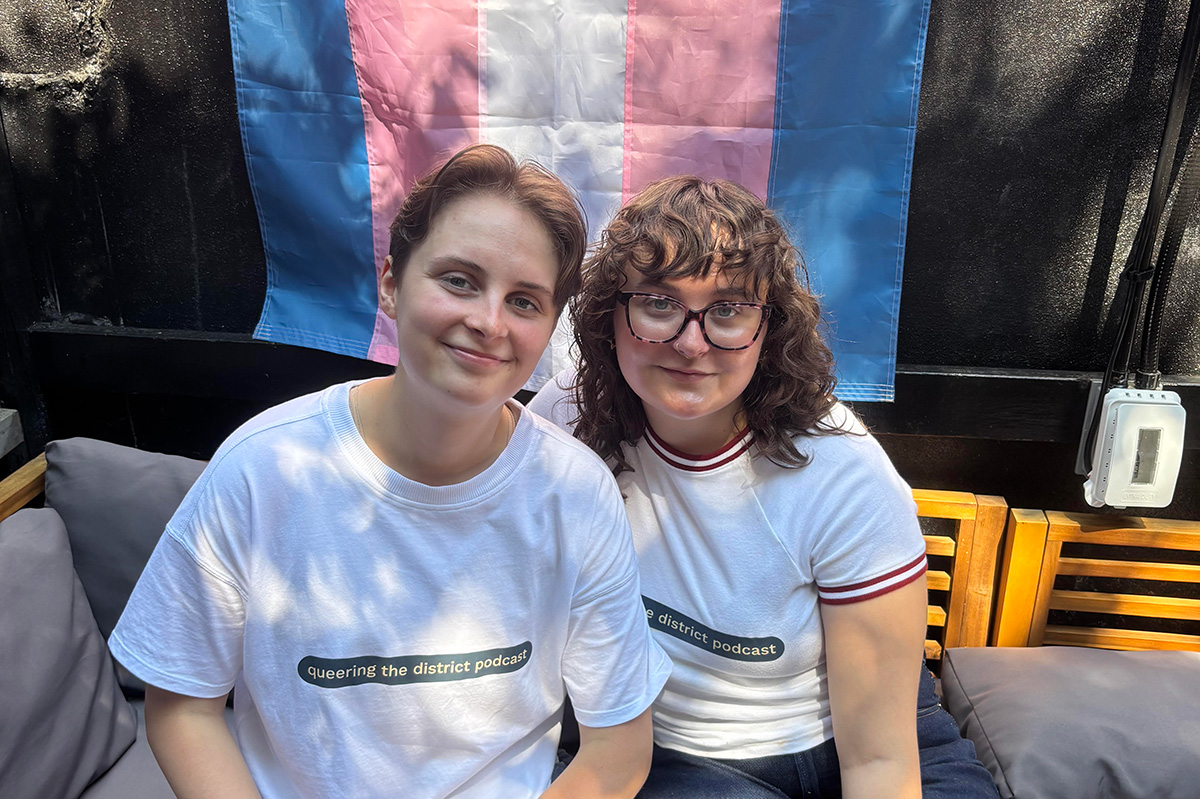
On June 25, as Pride month inched toward its end, three queer creators launched an ambitious project to honor the spaces that built D.C.’s LGBTQ community—and connect them to today’s queer life. The first episode of their podcast, Queering the District, hit streaming platforms that day, aiming to spotlight what host and co-creator Abby Stuckrath calls “third places”: bars, clubs, and gathering spots that have served as hubs for queer life across the city.
Each episode of the 10-part series delves into a different piece of D.C.’s queer past—from landmark clubs to untold personal stories—told through the voices of drag legends, activists, DJs, historians, and patrons who lived it. The show also threads together personal experiences from today’s community, bringing the listener on an auditory journey from Prohibition-era speakeasies to contemporary nights out at places like As You Are or Saints & Sinners.
Abby Stuckrath, alongside her sibling Ellie Stuckrath, and producer Mads Reagan, make up the podcast’s creative team. A recent journalism graduate of American University, Abby told the Blade that her passion for queer storytelling began during college—and that D.C. itself played a defining role in shaping her queer identity.
“I went to American University. I graduated last year and studied journalism. When I was in school, I always wanted to focus on queer stories – especially in D.C., because I’m from Denver, Colorado, I’ve never lived in a place like this before. D.C. has always just kind of been a place I call home when it comes to my queer identity.”
But breaking into the media to tell those stories wasn’t easy. Stuckrath quickly learned that editorial support—and funding—for queer-focused projects is limited. So she decided to do it her own way.
“I kind of found out that if you want to tell stories, you kind of have to do it on your own– especially when it comes to queer stories. There’s not a lot of people begging for us to talk about queer people and to pay you for it. So I was like, ‘Okay, let’s just do it on my own.’”
The idea for the podcast first took root in conversations with Ellie, Abby’s sibling and biggest supporter. Ellie had also moved to D.C. to find more space to explore and express their queer and gender identities. Together, the two began shaping a vision that would combine storytelling, sound design, and grassroots community input.
“I was like, ‘I don’t know what exactly I want to do yet, but I want it to be queer, and I want it to be about D.C., and it’s going to be called Queering the District, and we’re going to find out what that means.’ And Ellie is my biggest supporter, and my best friend. And they were like, ‘Hell yeah. Like, let’s do this.’ And so we decided to just do it together.”
The name stuck—and so did the mission. The team began researching queer D.C. history and found a city overflowing with stories that had rarely been documented, especially in mainstream archives.
“We started looking up the history of queer culture in D.C., and it kind of just clicked from there,” Stuckrath said. “I did not know anything about how rich our history is in the city until one Google search, and then I just kept learning more and more. I was kind of pissed because I studied gender studies in school in D.C. and didn’t learn shit about this.”
Season one focuses on the role of third places—non-work, non-home spaces where queer people could gather, exist fully, and build community.
“Third places have always been the epicenter of queer life… places outside of just your own personal home, because sometimes that isn’t a safe place. And of course, the work most commonly in the past and still today, isn’t a safe place for queer people to be full of themselves. So like, bars were the first place for queer people to really thrive and meet each other.”
To make the show participatory, Queering the District includes a twist: a voicemail line where anyone can call in and share a memory or question. The team calls the phone “Fifi”—a nod to the kind of retro guestbooks often used at weddings, but reimagined for queer nightlife and history.
“We wanted to find a way for people to share their stories with us anonymously… so even though we start in Prohibition, we wanted to connect it to now—like, those people who were singing jazz to each other in a white queer bar are connected to you singing karaoke on a Sunday night at your favorite gay bar. We’re all interconnected by this third place of queer bars in D.C.”
Those connections are emotional as well as historical. While building the series, one realization hit Stuckrath particularly hard: the immense loss of queer spaces in D.C., especially in neighborhoods that have since been heavily redeveloped.
“Every time I go to a Nats game, I think about, well, this just replaced five gay bars that used to be here. It used to be the home of Ziegfeld’s… Tracks, which was almost 2,000 square feet, with a volleyball court in the back, a fire pit, and iconic light show. I just didn’t know that we had that, and it made me sad for the queer elders that are in our city now who walk the streets and don’t see all those places they used to call home.”
That sense of loss—alongside the joy and resilience of queer community—is what the show aims to capture. As the podcast continues, Abby hopes it serves as both a celebration and an educational tool, especially for young LGBTQ people arriving in D.C. without realizing the queer foundations they’re walking on.
“D.C. is a unique city, and specifically young queer people who are hoping to move to the city—to know that you’ve got to know your history to be here. I hope this serves as an easier way for you to consume and learn about queer history, because queer history defines how we move in life.”
And for all the voices still left out, Abby is clear: this podcast is an open door, not a final word.
“This is a perfectly imperfect podcast. We should just be a starting point. We shouldn’t be the ending point.”
New episodes of Queering the District drop every Wednesday on all major platforms.
a&e features
Doug Spearman takes his chance
‘Noah’s Arc: The Movie’ debuted on Paramount+ last month
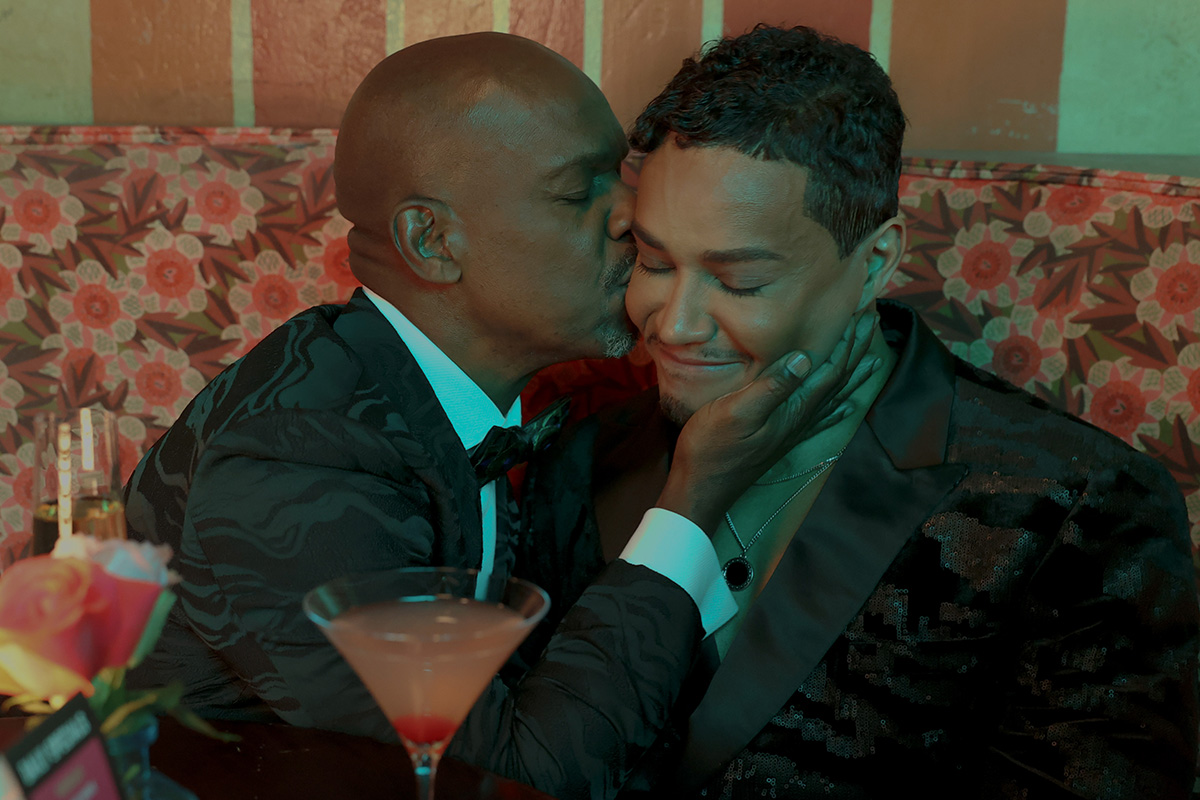
There’s no question that when Patrik-Ian Polk’s series “Noah’s Arc” premiered on Logo 20 years ago, it was a groundbreaking creation. The story of a group of Black gay men and their wonderful friendship. The titular arc was that of the cute main character, Noah (Darryl Stephens), and his close-knit circle of friends, including Chance played by gay actor Doug Spearman. This compelling and loving fraternity may, in fact, be what brought viewers back repeatedly, including a 2008 movie, “Noah’s Arc: Jumping the Broom,” as well as the 2020 “Noah’s Arc” short, and now, a new full-length feature “Noah’s Arc: The Movie,” debuting on Paramount+ on June 20. In the movie, filled with equal measures of laughs and tears, Chance, who has faced a devastating loss, finds his dependable friends there, ready to support and comfort him at a moment’s notice. I had the pleasure of speaking with Spearman the morning of the streaming premiere of “Noah’s Arc: The Movie.”
WASHINGTON BLADE: Doug, since the early 2000s, when the “Noah’s Arc” series premiered on Logo, you have been playing the character of Chance, including in the latest installment, “Noah’s Arc: The Movie.” What was it about Chance that appealed to you as an actor?
SPEARMAN: When Patrik (-Ian Polk) called me to ask me to play him (Chance), I was at JFK airport in the baggage claim, waiting for a suitcase. He explained what the part was. The thing that stuck out to me was the fact that Chance was in a long-term relationship with another Black man. And, they had a child; they had a 4-year-old daughter named Kenya. I had never seen two Black gay men raise a child on TV before. I thought it was the most revolutionary thing I’d ever seen. I immediately thought I’ve got to do this because that was something nobody had seen. I thought it was incredibly important to take the part.
BLADE: “Noah’s Arc: The Movie” was, once again, written and directed by Patrik-Ian Polk, who you just mentioned, is the creator of the entire franchise. What’s the secret to your long-standing working relationship?
SPEARMAN: [Laughs] the whole team, all of us, are like a band of brothers. We fight like brothers, we come together like brothers, we hash things out, we talk, because we’re all very different from our characters. I think the challenge of playing these guys and then uplifting these men, playing a part, especially something written by Patrik, is like solving a math equation. There’s always a challenge that’s enjoyable for me as an actor: to try to find out what it is that Patrik wants, and then how do I do it.
BLADE: I think you do a very good job of it.
SPEARMAN: Thank you very much
BLADE: In the years between “Jumping the Broom” and the new full-length movie, many changes have occurred, and the story addresses some of them, including gay widowhood, which is something that the aging community is now confronting, as well as mental health issues. Please say a few words about how you approached those subjects in the new movie.
SPEARMAN: I had a lot of loss in my life, right before we started shooting. Two months before we started shooting the first series, my mother died. I was going through the grief process through that whole first season. Since then, I’ve lost a lot of people in my life. In fact, when we started shooting the second season, the second week we were shooting, my ex died of a heart attack. I was having to fold that into what I was doing with my life on the set and off the set. You’ve got to show up and you’ve got to do your work. The first two seasons of “Noah’s Arc” are always tinged with the memory of grief. So, when I had to deal with the death that Chance faces (in the new movie), which is a significant death in his life, it wasn’t that hard to reach back, especially the scene in the graveyard. It was something that I unfortunately could pull from personal experience.
BLADE: Shifting gears, the movie features delightful cast surprises, including Jasmine Guy and TS Madison. Did you have a chance to interact with either or both when they were on set?
SPEARMAN: No, I didn’t have any scenes with Jasmine, and I missed her. I wish I had gotten to see her because I actually got to direct Jasmine for a CBS promo shoot for “Queen,” back in the early ‘90s. I had a huge crush on her when she was on “A Different World.” So, I really would have liked to reconnect. But TS and I got to see each other every day because I was in all her scenes. It was extraordinary being around somebody like that. That is one outspoken woman!
BLADE: Even though Beyoncé never makes an appearance in the movie, there’s a lot of talk about her. Would you say you are a Beyoncé fan?
SPEARMAN: Yes! I’m breathing! Yes, I’m a Beyoncé fan. I actually got the chance to meet her. I knew her mom. Her mom was extraordinary to me. She is in the second movie I directed. She also gave us a wedding gown to use in the very first scene of the movie. That family is extraordinarily important to me. Not only just to be a fan, but to be somebody who’s gotten to know them and work with them and see how hard they work. I don’t think anybody works as hard as Tina or Beyoncé.
BLADE: There was a recent news item about gay actor Benito Skinner of the Amazon Prime series “Overcompensating” being told not to bother auditioning for straight roles. As an out actor yourself, how important do you think it is for queer characters to be portrayed by queer actors, and vice versa?
SPEARMAN: Being queer is a multifaceted identity. There’s no one kind of queer person. I think finding the best actor that’s your first circle of casting. I think one of the joys about being an actor is that you get to play different parts. I play straight guys all the time. Dads and husbands and things like that. I think a lot of people are told not to do it. In fact, I wouldn’t be Chance if the actor who was originally cast as Chance hadn’t been pulled out of the series by his agents because they didn’t want him to play a gay character.
BLADE: That’s amazing! Thank you for sharing that. Without giving away too much, the ending of the movie is a little ambiguous, even ending with a question mark. If there was a “Noah’s Arc: The Movie” sequel, would you come back for that?
SPEARMAN: Yeah! A lot of it would depend on what Chance’s journey is going to be like. Patrik and I have conversations like that all the time. He’s very interested and supportive of input. I hope I would be, as we all would be, part of the creative growth with these characters. They live in Patrik’s head, and he writes them, but we’re the ones who have to flesh them out. It’s a conversation, it’s always a conversation.
BLADE: You are currently performing in Molière’s “The Imaginary Invalid” as part of the New Orleans Shakespeare Festival at Tulane. What has this experience been like for you?
SPEARMAN: It’s extraordinary! I started on stage when I was seven. There’s nothing like working with a live audience and having that immediacy. I’m working with an extraordinarily talented cast in a really great play, and I have some of the best scene partners I could ever want.
BLADE: Are there any upcoming film or TV projects you’d like to mention?
SPEARMAN: I’m still a writer, and I’m still a director, and I’ve still got scripts that I would like to make. I have a little something that’s a cross between “Treme” and “Bridgerton” that I want to do. I’m always trying to figure out what the next thing is.
a&e features
Visit Cambridge, a ‘beautiful secret’ on Maryland’s Eastern Shore
New organization promotes town’s welcoming vibe, LGBTQ inclusion
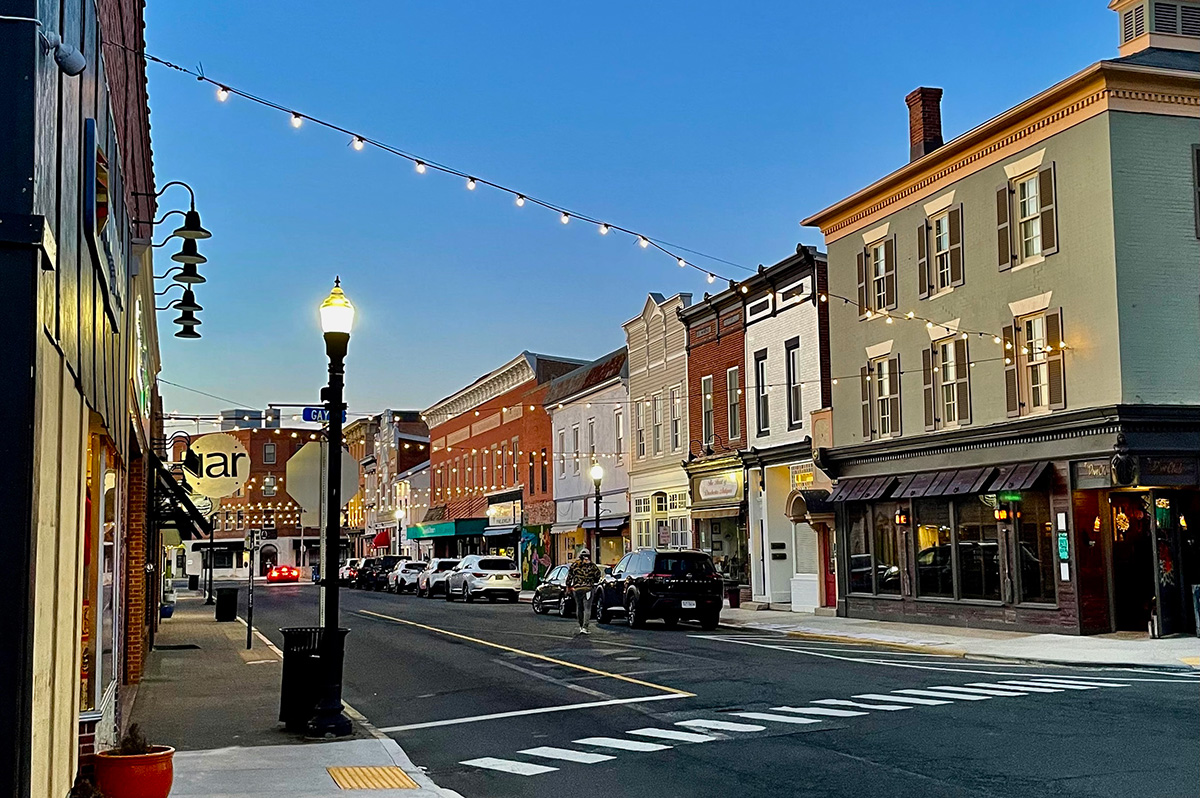
CAMBRIDGE, Md. — Driving through this scenic, historic town on Maryland’s Eastern Shore, you’ll be charmed by streets lined with unique shops, restaurants, and beautifully restored Victorian homes. You’ll also be struck by the number of LGBTQ Pride flags flying throughout the town.
The flags are a reassuring signal that everyone is welcome here, despite the town’s location in ruby red Dorchester County, which voted for Donald Trump over Kamala Harris by a lopsided margin. But don’t let that deter you from visiting. A new organization, Proudly Cambridge, is holding its debut Pride event this weekend, touting the town’s welcoming, inclusive culture.
“We stumbled on a beautiful secret and we wanted to help get the word out,” said James Lumalcuri of the effort to create Proudly Cambridge.
The organization celebrates diversity, enhances public spaces, and seeks to uplift all that Cambridge has to share, according to its mission statement, under the tagline “You Belong Here.”
The group has so far held informal movie nights and a picnic and garden party; the launch party is June 28 at the Cambridge Yacht Club, which will feature a Pride celebration and tea dance. The event’s 75 tickets sold out quickly and proceeds benefit DoCo Pride.
“Tickets went faster than we imagined and we’re bummed we can’t welcome everyone who wanted to come,” Lumalcuri said, adding that organizers plan to make “Cheers on the Choptank” an annual event with added capacity next year.
One of the group’s first projects was to distribute free Pride flags to anyone who requested one and the result is a visually striking display of a large number of flags flying all over town. Up next: Proudly Cambridge plans to roll out a program offering affirming businesses rainbow crab stickers to show their inclusiveness and LGBTQ support. The group also wants to engage with potential visitors and homebuyers.
“We want to spread the word outside of Cambridge — in D.C. and Baltimore — who don’t know about Cambridge,” Lumalcuri said. “We want them to come and know we are a safe haven. You can exist here and feel comfortable and supported by neighbors in a way that we didn’t anticipate when we moved here.”
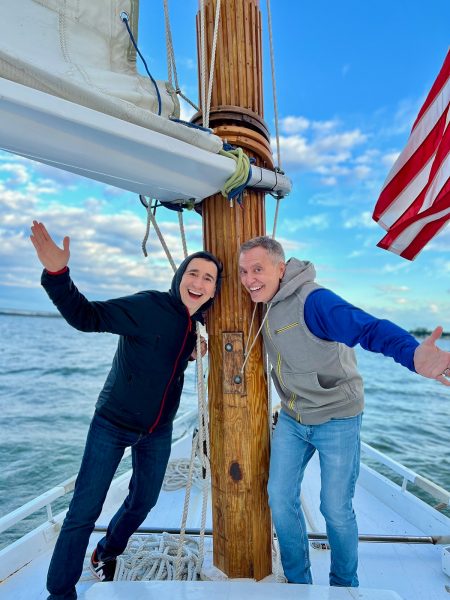
Lumalcuri, 53, a federal government employee, and his husband, Lou Cardenas, 62, a Realtor, purchased a Victorian house in Cambridge in 2021 and embarked on an extensive renovation. The couple also owns a home in Adams Morgan in D.C.
“We saw the opportunity here and wanted to share it with others,” Cardenas said. “There’s lots of housing inventory in the $300-400,000 range … we’re not here to gentrify people out of town because a lot of these homes are just empty and need to be fixed up and we’re happy to be a part of that.”
Lumalcuri was talking with friends one Sunday last year at the gazebo (affectionately known as the “gayzebo” by locals) at the Yacht Club and the idea for Proudly Cambridge was born. The founding board members are Lumalcuri, Corey van Vlymen, Brian Orjuela, Lauren Mross, and Caleb Holland. The group is currently working toward forming a 501(c)3.
“We need visibility and support for those who need it,” Mross said. “We started making lists of what we wanted to do and the five of us ran with it. We started meeting weekly and solidified what we wanted to do.”
Mross, 50, a brand strategist and web designer, moved to Cambridge from Atlanta with her wife three years ago. They knew they wanted to be near the water and farther north and began researching their options when they discovered Cambridge.
“I had not heard of Cambridge but the location seemed perfect,” she said. “I pointed on a map and said this is where we’re going to move.”
The couple packed up, bought a camper trailer and parked it in different campsites but kept coming back to Cambridge.
“I didn’t know how right it was until we moved here,” she said. “It’s the most welcoming place … there’s an energy vortex here – how did so many cool, progressive people end up in one place?”
Corey van Vlymen and his husband live in D.C. and were looking for a second home. They considered Lost River, W.Va., but decided they preferred to be on the water.
“We looked at a map on both sides of the bay and came to Cambridge on a Saturday and bought a house that day,” said van Vlymen, 39, a senior scientist at Booz Allen Hamilton. They’ve owned in Cambridge for two years.
They were drawn to Cambridge due to its location on the water, the affordable housing inventory, and its proximity to D.C.; it’s about an hour and 20 minutes away.
Now, through the work of Proudly Cambridge, they hope to highlight the town’s many attributes to residents and visitors alike.
“Something we all agree on is there’s a perception problem for Cambridge and a lack of awareness,” van Vlymen said. “If you tell someone you’re going to Cambridge, chances are they think, ‘England or Massachusetts?’”
He cited the affordability and the opportunity to save older, historic homes as a big draw for buyers.
“It’s all about celebrating all the things that make Cambridge great,” Mross added. “Our monthly social events are joyful and celebratory.” A recent game night drew about 70 people.
She noted that the goal is not to gentrify the town and push longtime residents out, but to uplift all the people who are already there while welcoming new visitors and future residents.
They also noted that Proudly Cambridge does not seek to supplant existing Pride-focused organizations. Dorchester County Pride organizes countywide Pride events and Delmarva Pride was held in nearby Easton two weeks ago.
“We celebrate all diversity but are gay powered and gay led,” Mross noted.
To learn more about Proudly Cambridge, visit the group on Facebook and Instagram.
What to see and do
Cambridge, located 13 miles up the Choptank River from the Chesapeake Bay, has a population of roughly 15,000. It was settled in 1684 and named for the English university town in 1686. It is home to the Harriet Tubman Museum, mural, and monument. Its proximity to the Blackwater National Wildlife Refuge makes it a popular stop for birders, drawn to more than 27,000 acres of marshland dubbed “the Everglades of the north.”
The refuge is walkable, bikeable, and driveable, making it an accessible attraction for all. There are kayaking and biking tours through Blackwater Adventures (blackwateradventuresmd.com).
Back in town, take a stroll along the water and through historic downtown and admire the architecture. Take in the striking Harriet Tubman mural (424 Race St.). Shop in the many local boutiques, and don’t miss the gay-owned Shorelife Home and Gifts (421 Race St.), filled with stylish coastal décor items.
Stop for breakfast or lunch at Black Water Bakery (429 Race St.), which offers a full compliment of coffee drinks along with a build-your-own mimosa bar and a full menu of creative cocktails.
The Cambridge Yacht Club (1 Mill St.) is always bustling but you need to be a member to get in. Snapper’s on the water is temporarily closed for renovations. RaR Brewing (rarbrewing.com) is popular for craft beers served in an 80-year-old former pool hall and bowling alley. The menu offers burgers, wings, and other bar fare.
For dinner or wine, don’t miss the fantastic Vintage 414 (414 Race St.), which offers lunch, dinner, wine tasting events, specialty foods, and a large selection of wines. The homemade cheddar crackers, inventive flatbreads, and creative desserts (citrus olive oil cake, carrot cake trifle) were a hit on a recent visit.
Also nearby is Ava’s (305 High St.), a regional chain offering outstanding Italian dishes, pizzas, and more.
For something off the beaten path, visit Emily’s Produce (22143 Church Creek Rd.) for its nursery, produce, and prepared meals.
“Ten minutes into the sticks there’s a place called Emily’s Produce, where you can pay $5 and walk through a field and pick sunflowers, blueberries, you can feed the goats … and they have great food,” van Vlymen said.
As for accommodations, there’s the Hyatt Regency Chesapeake Bay (100 Heron Blvd. at Route 50), a resort complex with golf course, spa, and marina. Otherwise, check out Airbnb and VRBO for short-term rentals closer to downtown.
Its proximity to D.C. and Baltimore makes Cambridge an ideal weekend getaway. The large LGBTQ population is welcoming and they are happy to talk up their town and show you around.
“There’s a closeness among the neighbors that I wasn’t feeling in D.C.,” Lumalcuri said. “We look after each other.”
-
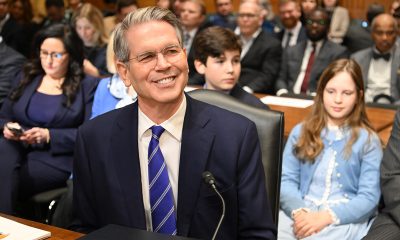
 Federal Government2 days ago
Federal Government2 days agoTreasury Department has a gay secretary but LGBTQ staff are under siege
-
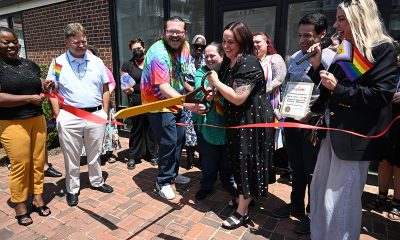
 Virginia3 days ago
Virginia3 days agoDefying trends, new LGBTQ center opens in rural Winchester, Va.
-
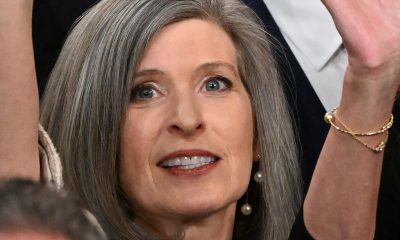
 District of Columbia2 days ago
District of Columbia2 days agoGay GOP group hosts Ernst, 3 House members — all of whom oppose Equality Act
-
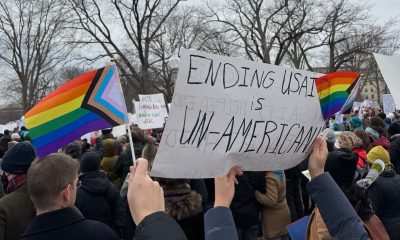
 Opinions4 days ago
Opinions4 days agoUSAID’s demise: America’s global betrayal of trust with LGBTQ people






